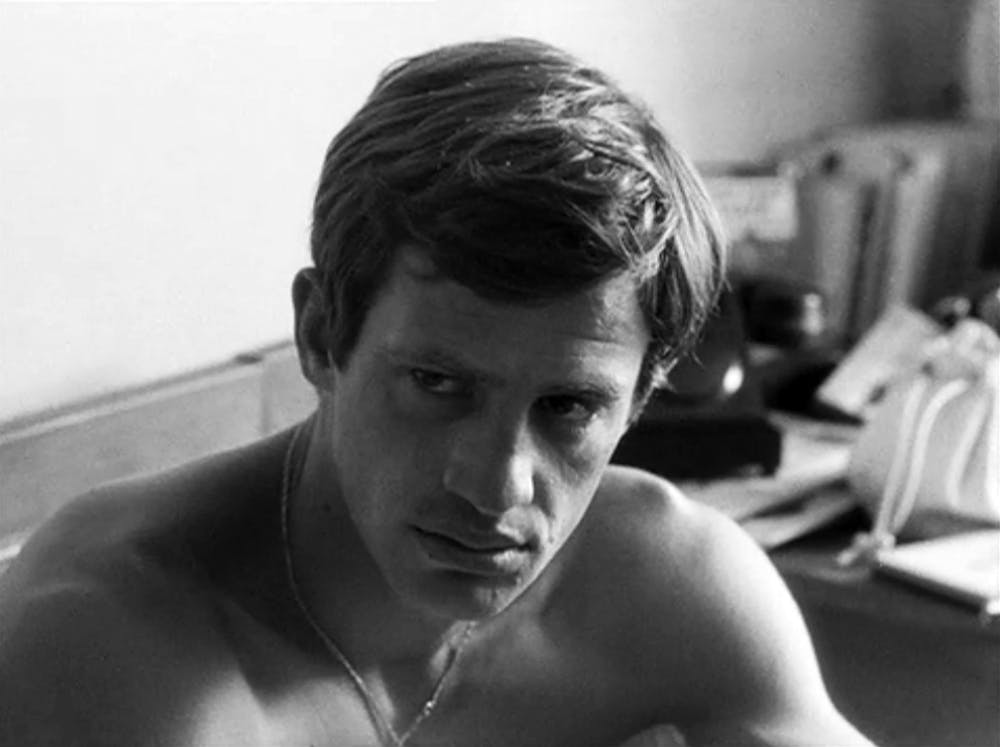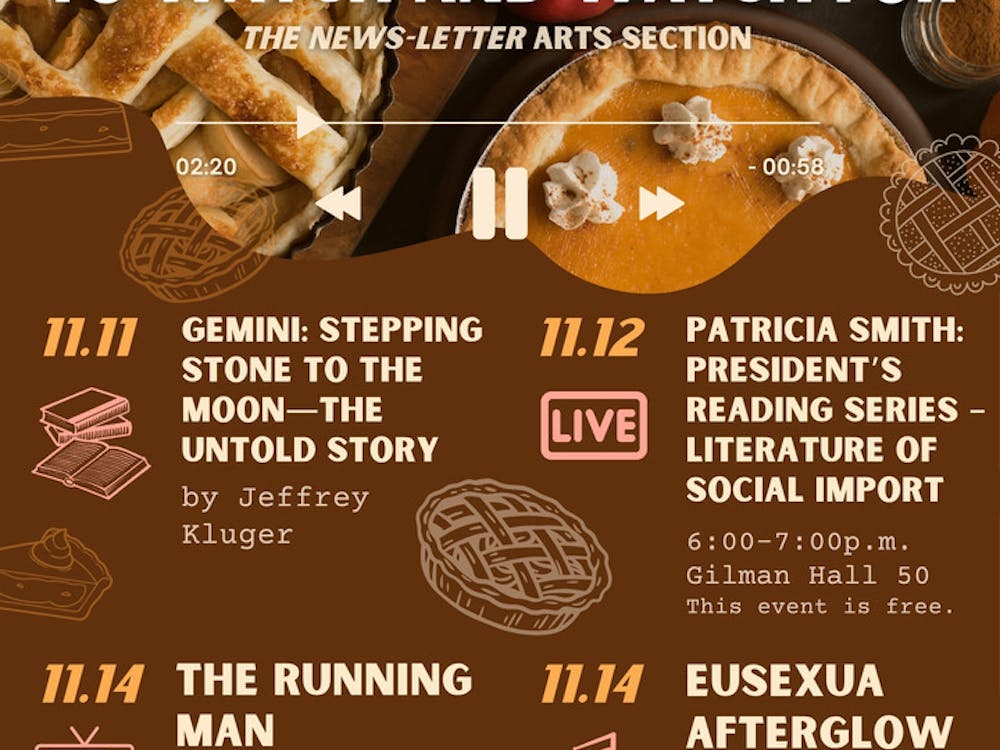“It’s supposed to be important,” said the upperclassman who mentioned Pierrot le Fou, the Hopkins Film Society’s choice for a movie screening in Shriver Hall on Saturday, Oct. 1.
French New Wave pioneer Jean-Luc Godard, writer-director of Pierrot, attracted attention and gained influence by showing contempt for the established rules of cinema. He opted for jump cuts, improvised dialogue, cheap equipment, asymmetrical shots, absurdist themes, long takes — the list could go on. But here Godard’s specific innovations matter less than his motivation as filmmaker: to playfully mock the audience’s expectations. After all, fourth wall breaks might seem overused now, but in the early ‘60s, they gave Godard a reputation as a radical experimentalist.
Pierrot follows Ferdinand “Pierrot” Griffon as he leaves his family and flees Paris with his ex-girlfriend Marianne Renoir after she draws him into her life of crime. Once they reach the south of France, Pierrot chooses a quiet life spent reading literature and writing in his journal, even though his search for meaning starts boring his mistress.
He and Marianne separate, and, when she reappears years later in order to steal money from him, he shoots her and her new boyfriend. Pierrot commits suicide shortly afterward by painting his face blue and wrapping himself in dynamite in the comic final scene — a typical storyline and ending for Jean-Luc Godard, whose most acclaimed film Breathless involves a similar storyline and ending.
Stylistically, Jean-Luc Godard’s radical tendencies reached their heights in Pierrot le Fou. He filled the movie with lurid colors pulled from the cartoons and pop art of the time and showed the influence of these cartoons more in Pierrot than in any other movies of his career.
In a memorable example from a scene at the end of “Chapter 1,” a man at a party throws cake at a woman and Godard cuts to a shot of an exploding firecracker just before the cake hits her. In the same scene, Godard sheds a white light on the party-goers who want to talk to Pierrot so that they stand out but casts a blue hue on the superficial people so that they blend into the backdrop.
Godard had only recently started filming in color when he shot Pierrot, and the party scene finds him taking full advantage of a medium with more options.
In addition to demonstrating new tricks, Godard brings to Pierrot le Fou everything that made Breathless so original. Most noticeably, fourth wall breaks: In one scene, a minor character that witnessed Ferdinand commit a crime introduces himself as a “film extra” to the audience’s laughter as he looks at the camera.
On the other hand, the only time when a character in Breathless acknowledges the audience happens during the last scene. Godard uses fourth wall breaks more sparingly and to greater dramatic effect in Breathless, whereas in Pierrot le Fou he overuses them to the extent that they become a comedic device at best and a gimmick at worst.
Characters in Breathless defied the audience’s expectations when they addressed the viewers, but by the end of Pierrot, Godard’s audience came to expect this acknowledgement from the characters.
Godard overlooked the importance of restraint in other parts of Pierrot le Fou as well. Instead of keeping bright primary colors only to scenes where the audience should feel overwhelmed, such as the party scene, Godard shot so many scenes with these bright tints that he overworks the audience’s sense of sight. After the movie ended, some members of the audience remarked that the movie gave them too much to process at one time. Godard could have applied colors more sparingly or cut certain nonessential scenes in the second half to avoid wearing out his viewers’ eyes and brains. After all, Pierrot runs for two hours, longer than any of his previous movies.
Naturally putting such an emphasis on color might confuse people who have never seen Pierrot le Fou or are unfamiliar with Godard. But, for someone trying to understand Pierrot, the visuals and technique matter most, more than the plot and the dialogue.
Godard, a director who worked as a film critic in the 1950s, famously stressed the importance of showing over telling when he said, “In order to criticize a movie, you have to make another movie.”





